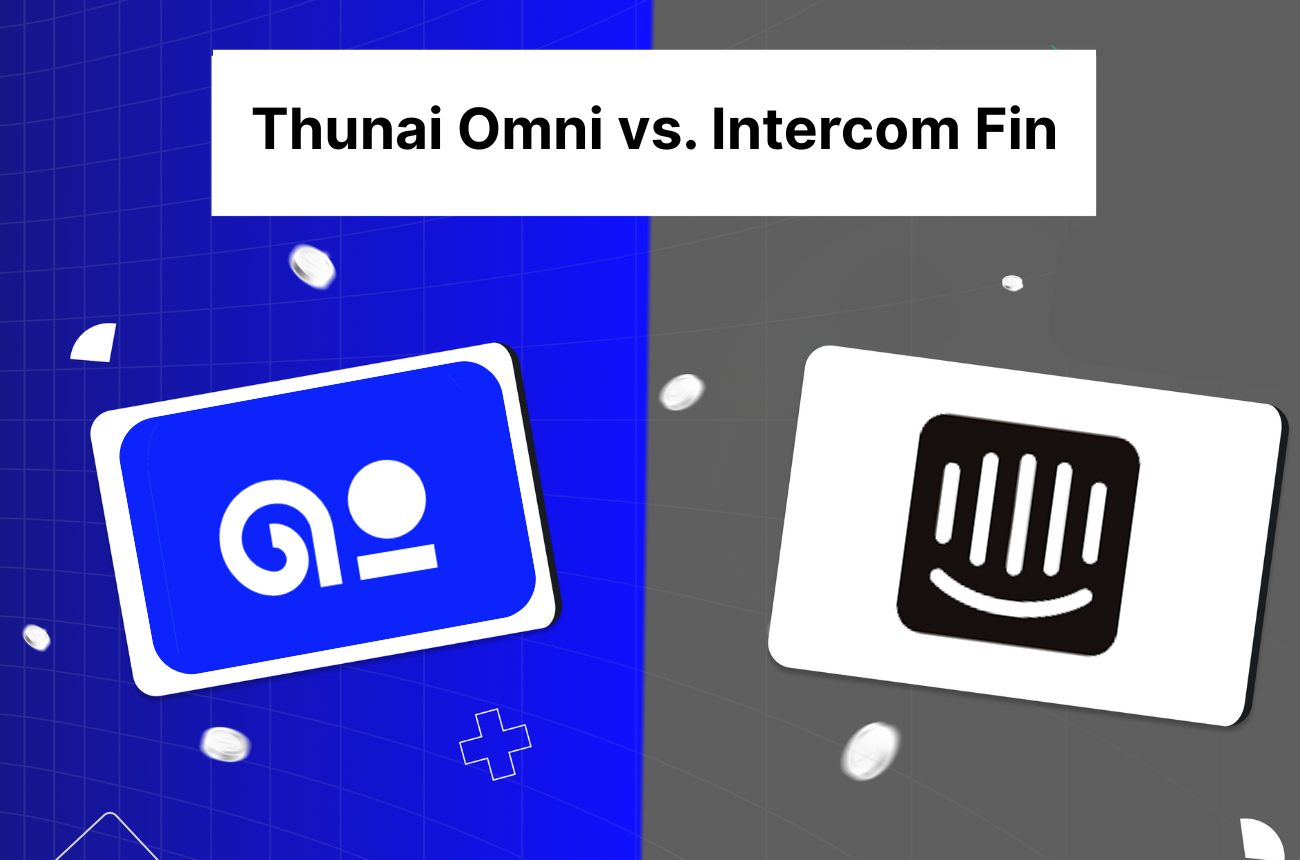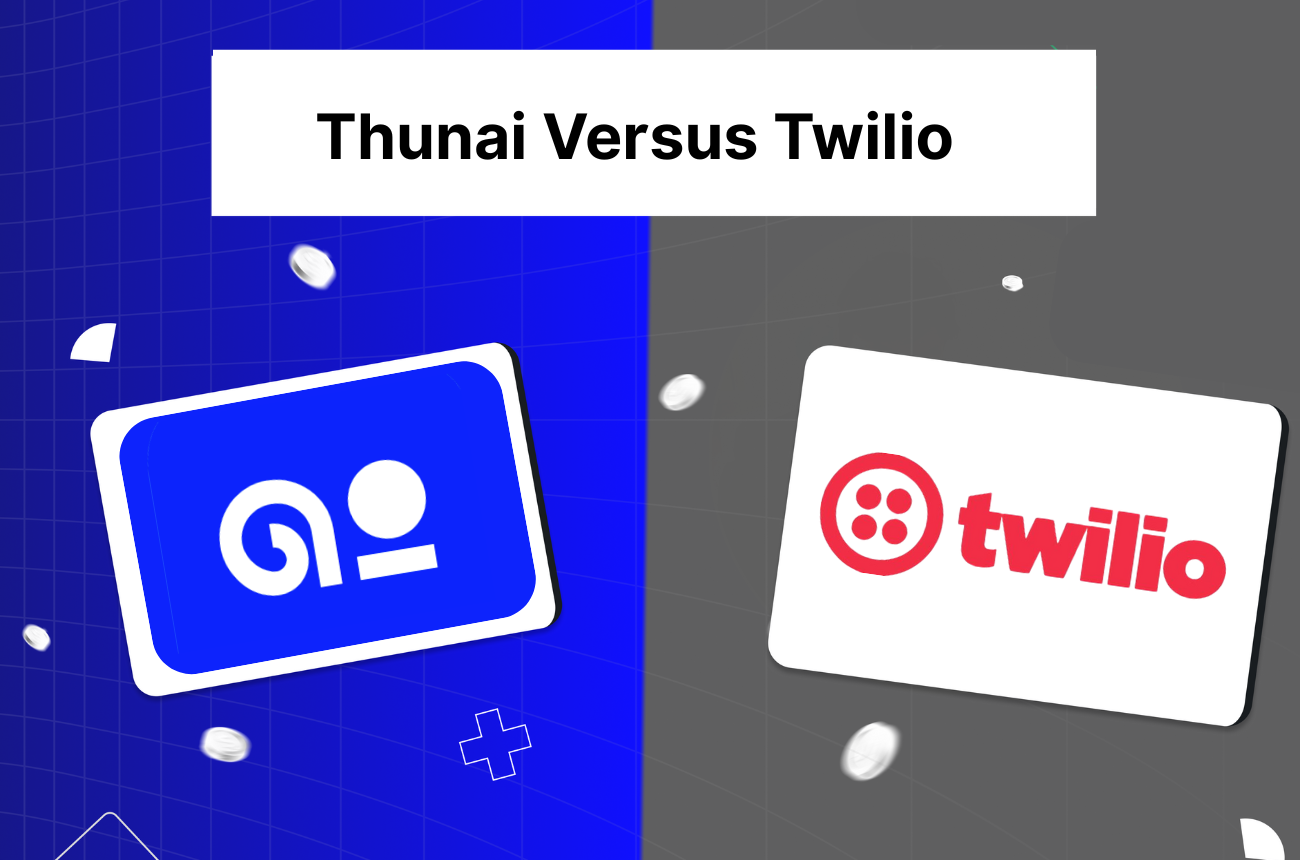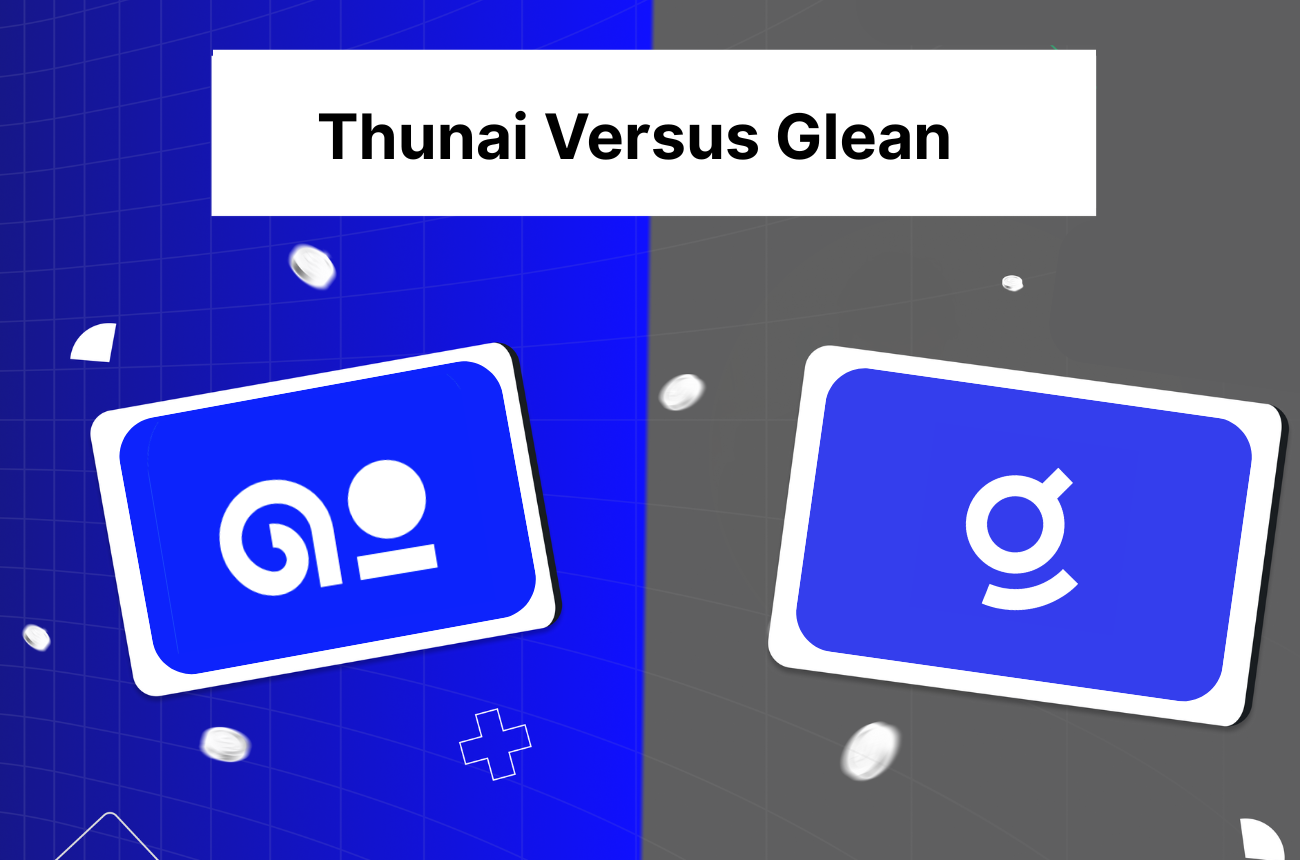Thunai Omni vs. Intercom Fin: An In-Depth Comparison for Businesses



Thunai learns, listens, communicates, and automates workflows for your revenue generation team - Sales, Marketing and Customer Success.
TL;DR
Summary
- Intercom is a Customer Service Suite built around messaging, excelling in proactive chat and basic automation — but it operates as a ticketing system that charges per AI resolution.
- Thunai is a unified AI-hybrid platform featuring Thunai Omni, which augments AI agents with real-time human monitoring and intervention.
- Intercom uses a usage-based model, meaning you pay more as AI solves more issues, and mobile app stability remains a risk to manage.
- Thunai is a complete interaction system blending AI automation with human skill, offering tools like Live Sentiment Analysis and a Co-Pilot to prevent escalations and resolve issues faster.
Are you looking into Intercom? You might know them as the leader in business chat. You might have seen their messenger on many SaaS websites.
The company sells a slick chat widget. But do you want a tool that chats, or a system that resolves issues?
Intercom positions itself as an AI-first platform. This means you get the chat tools. But you must pay for every resolution provided by their Fin AI.
You must manage a complex billing structure. You must handle potential mobile SDK crashes. The process brings about a need for careful auditing. This choice also brings hidden costs that pile up because you pay for seats and AI usage separately.
A project like that can lead you to spend huge sums on a system that penalizes you for growth. However, if you want to change that dynamic, read on. If you want to get results without a resolution tax, here is how...
What is Thunai AI Omni?
Thunai Omni acts as the central hub for this platform. The module augments all AI agents to a unified platform. This comes with real-time human monitoring. This comes with intervention capability.
But the real power lies in the Live Sentiment Analysis. The system runs continuous analysis on every interaction. If a customer gets frustrated, Thunai Omni sends a real-time alert to a human supervisor. This allows the human to barge in instantly. They can take over the conversation with full context.
From there, the Thunai Co-Pilot assists the human agent. This AI assistant works alongside your team.
The Co-Pilot pulls up past orders. The tool pulls up communication history. The system pulls up internal SOPs. This happens in real time. This helps the agent make data-backed decisions without digging through tabs.
What is Intercom?
When you think about modern help desks, you look at Intercom. Intercom is a Customer Service Suite. The company is famous for its Messenger. The platform offers tools for support teams. The system offers tools for engagement.
The company's main idea is to make the internet business personal. They want to give teams the tools to message users directly. Intercom sells the promise of a unified inbox. In this system, you manage tickets and chats in one place.
The platform is made up of three main parts:
- The Inbox: This is the core help desk. The inbox lets agents manage conversations. The system supports tickets. The tool offers basic agent assistance.
- Fin AI Agent: This is the automated bot. The bot uses LLMs to answer questions based on your help center. The system charges a fee for every resolved conversation.
- Proactive Support: This is a marketing layer. The tool lets you send outbound messages. The software lets you create product tours to guide users.
That said, the platform operates on a usage-based model. This requires you to pay for every successful AI interaction. Expert analysis shows this creates a tax on efficiency. This tax punishes you for automating support.
Users report a need for constant monitoring. They need this just to make sure the bill does not spike unexpectedly.
Does paying extra for every problem you solve sound like a fair way to scale your business?
Thunai vs Intercom: Feature Comparison
So what sets Thunai and Intercom apart? Intercom gives you a world-class chat interface. You use it to talk to users. The company positions itself as a suite for customer engagement. Thunai AI is built as a complete system for customer interaction. The system is ready to lower resolution times now.
The two systems have different goals. Intercom gives you the parts to manage a ticket queue. Thunai hands over a hybrid workforce of AI and humans. Intercom’s features are support tools. These include ticketing. They include outbound campaigns.
Thunai’s features are intelligent modules. These include the Omni Inbox. They include the Co-Pilot. They include Application Embedding.
| Feature | Thunai AI | Intercom |
|---|---|---|
| Live Sentiment Analysis | ✓ | ✗ |
| Real-Time Human Barge-In | ✓ | ✗ |
| Omni Inbox (Voice, Chat, Email) | ✓ | X (Limited Voice) |
| AI Suggestions (Co-Pilot) | ✓ | ✓ (Copilot) |
| Deep Application Embedding | ✓ | X (Requires Connectors) |
| Escalation Alerts | ✓ | ✗ |
| Usage-Based Resolution Fees | ✗ | ✓ ($0.99/resolution) |
User Experience and Reviews
Intercom's position in the market is clear. Users love the interface design. But business owners tell a different story. The platform gets complaints. Users say the pricing structure is hostile.
Analysis shows that Intercom is great for UI. The tool struggles as a partner for growth.
- Users report critical issues with lock-in. A major issue is the data export difficulty. If you want to leave, moving your conversation history is hard. This creates a moat that keeps unhappy customers paying.
- Reviews also mention a mobile SDK crisis. Developers report that the iOS SDK causes app crashes. This goes against the need for a stable mobile experience. Users find it frustrating to debug these silent failures.
Thunai is built on a different plan. The entire experience is set up to be proactive. The design is made for smooth handovers.
- You use the Omni Inbox. The inbox lets you handle all channels from one workspace. You do not need one team for voice and another for chat. You can see the full history instantly.
- The Thunai user experience centers on prevention. The Intercom user experience centers on reaction. This brings about the ability to stop problems before they blow up.
Performance and Reliability
You need to be able to count on an AI system. Dependability is not just about answering FAQs. Reliability is about whether the system can handle complex situations. The real test is if the agent can act on data.
Intercom's method for performance relies on the Fin AI Agent. The company relies on you paying per resolution. This creates a performance gap.
However, users report real issues with this model.
- Contextual Blindness: Experts state that Fin excels at informational queries. But the bot struggles with complex transactional queries. The platform cannot inherently see deep account context without custom APIs. The bot fails when the question gets hard.
- Mobile Stability: The crash reports mentioned before are a performance failure. A support system that crashes your main app is not reliable. This flaw damages your brand.
Thunai's method for performance starts with the Application Embedding. The system connects deeply with your existing tools.
- Deep Context: Thunai Omni does not just understand words. The system acts on your business data. The tool connects to your ERP and CRM. This means the AI can check inventory thresholds. It can identify alternate vendors. It can draw up an RFQ automatically.
- Human-in-the-Loop: Thunai allows for real-time barge-in. A supervisor can listen. They can take over if the sentiment score drops. Intercom does not offer this live intervention.
- Proactive Alerts: Thunai sends Escalation Alerts. The system notifies you when a customer is angry. This happens before they ask for a manager.
Why would you wait for a bad review when you could get an alert the moment a customer gets annoyed?
Pricing and Value for Money
A platform's true cost goes beyond the seat price. Real cost includes the resolution fees. Real cost includes the manual work caused by siloed tools. This is where the difference between Thunai and Intercom stands out.
Intercom's pricing model is complex. The company uses a hybrid model. This has been called predatory by users. The base fee is just the start.
The costs can pile up. They pile up in hidden ways.
- The Resolution Tax: You pay Intercom for the seat. Then you must pay $0.99 for every AI resolution. You pay for success. If you automate 10,000 tickets, you pay $10,000 extra. This punishes you for efficiency.
- Unpredictable Bills: Users complain that bills spike unexpectedly. Forced plan migrations can jump costs significantly. This makes budgeting hard.
- Add-on Costs: If you want proactive support, you pay extra. If you send too many messages, you pay overage fees. You pay a premium to reach your own users.
Thunai is set up to give clear value. The design centers on lower resolution times. The system does this without the need for a tax on success.
- All-in-One Value: Modules like Omni work from day one. You get the AI agents. You get the Co-Pilot. You get the orchestration. You do not need to pay per answer.
- No Hidden Success Tax: You do not need to pay a penalty for automating your support. The system helps you cut down on manual work.
Security and Compliance
For any enterprise, guarding data is a top need. Both platforms have strong security measures. But they approach the problem in different ways.
Intercom puts a big emphasis on platform security. The company complies with standard regulations.
- Standard Compliance: Intercom meets major industry standards like SOC 2.
- Data Lock-in: They make it easy to get data in. But users report it is hard to get data out. This creates a security risk if you need to leave.
These are good features. However, they mostly protect the platform layer.
Thunai guards the business data layer. The system secures your information. It does this across the whole ecosystem.
- Application Embedding Security: Thunai connects to your apps via the MCP layer. This makes sure that data moving between your CRM and Thunai is secure. This applies to reading data. It applies to writing data.
- Co-Pilot Security: The Co-Pilot pulls data from internal SOPs. The system pulls data from past records. This ensures agents only see approved information.
- Full Traceability: Thunai provides logs of every interaction. You can see what the agent accessed. You can see what suggestions were used.
Why Enterprises Prefer Thunai Over Intercom
The choice between Thunai and Intercom is a big one. For many enterprises, the choice comes down to one question: Do you want to deflect tickets, or do you want to manage relationships?
Enterprises choose Thunai because it is a hybrid system. It is not just a bot.
Intercom is a messaging tool. The tool requires you to pay for every automated answer. You must manage complex billing. You must deal with mobile risks. Thunai is an AI-hybrid platform. The platform hands over value on day one.
- The Platform Enables Real-Time Control: Thunai Omni does not hide the conversation. The system shows you live sentiment scores. It alerts you to anger. It lets you barge in to save the relationship.
- The Platform Empowers Agents: You do not leave agents to search for answers. The Thunai Co-Pilot populates their screen. It shows order history. It shows SOPs. It shows supplier emails. It does this automatically.
- The Platform Takes Action: Thunai Omni connects to your inventory system. It can check thresholds. It can draft RFQs. It solves the problem instead of just talking about it.
Thunai is an AI system for your enterprise. This system is ready to work. Want to see Thunai in action?
FAQs on Intercom vs. Thunai
What is the main difference between Intercom and Thunai Omni?
Intercom is a Customer Service Suite. The platform excels at chat and ticketing. The system charges you for every AI resolution. Thunai Omni is a unified AI-hybrid platform. The module blends AI agents with human intervention. It uses live sentiment analysis to alert humans when to take over. It does not charge a resolution tax.
Why is Intercom's pricing called predatory?
Intercom charges a fee for every resolution provided by Fin. This acts as a tax on success. If your AI works well, your bill goes up. Users report this makes the Total Cost of Ownership higher. Thunai provides an integrated system where you pay for the value delivered. You do not pay a penalty for usage.
How does Thunai Omni help human agents?
Thunai Omni uses the Thunai Co-Pilot. This AI assistant works alongside the human. It automatically pulls up past orders. It pulls up communication history. It pulls up internal SOPs. This helps the agent make faster decisions. Intercom's Copilot offers summaries but lacks the deep application embedding of Thunai.
Can Thunai Omni handle voice calls?
Yes. Thunai Omni handles voice. It handles chat. It handles email. All from one centralized dashboard. The system offers real-time transcription for voice calls. It offers sentiment analysis for voice calls. Intercom is primarily focused on chat and has limited native voice capabilities.






